About the Montessori Approach for preschool program:
The Montessori method of education is based on the observations and discoveries of Dr. Maria Montessori. She was the first woman physician in Italy, graduating from the Royal University of Rome in 1896. From her many years of observation of children she began to design activities that would help the individual development of each child. Given a carefully prepared learning environment, children work toward perfecting their concentration, inner control, and will. A Montessori program is an individualized program designed to help each child reach his or her fullest potential. The Montessori materials are designed to help develop concentration, coordination and independence, as well as give good experience with academic concepts. The classroom environment allows the child to develop his or her social sense and awareness of others in a natural and unrushed way. Montessori education is education for life.
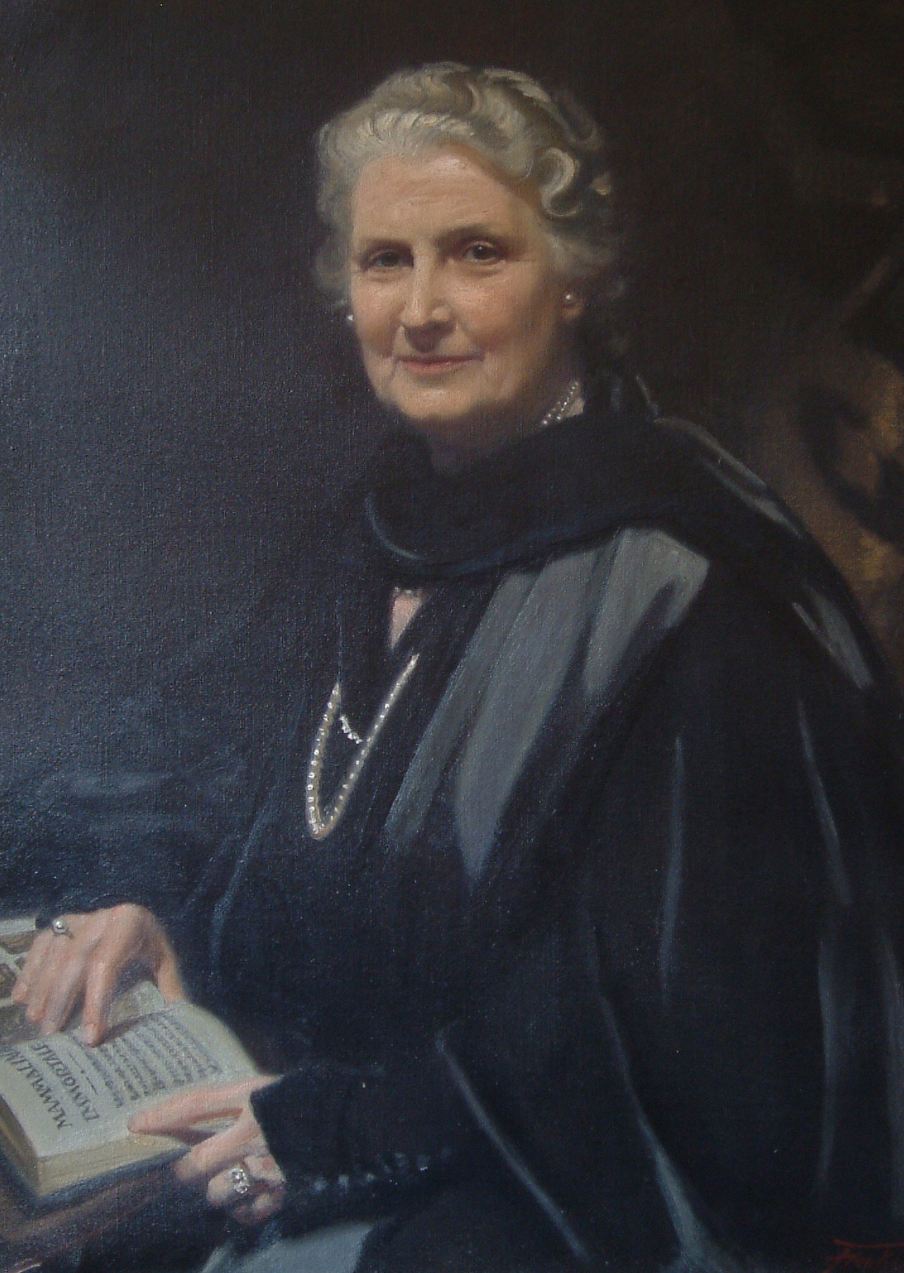
Overview
Developed by Italian Dr. Maria Montessori in the early 20th century, the Montessori philosophy has been adapted all over the world. At Bamboo Montessori, the practical application of this approach of sensory-based and self-directed learning for children is the most important element that runs through our programs : Infant/Toddler (Year 2 -3) Primary (3-6): Multi-age environment Enrichment programs: Music and Art, Gardening, Swimming pool Other languages beside English are French, Mandarin and Khmer.
Each of these programs is designed to address the developmental needs of children as individuals and help them develop at their own pace. Each program builds on the one before it, providing challenges appropriate to both age and skill levels. Languages, mathematics, spatial learning, self-discovery, music and art — they’re all incorporated into the Montessori approach.
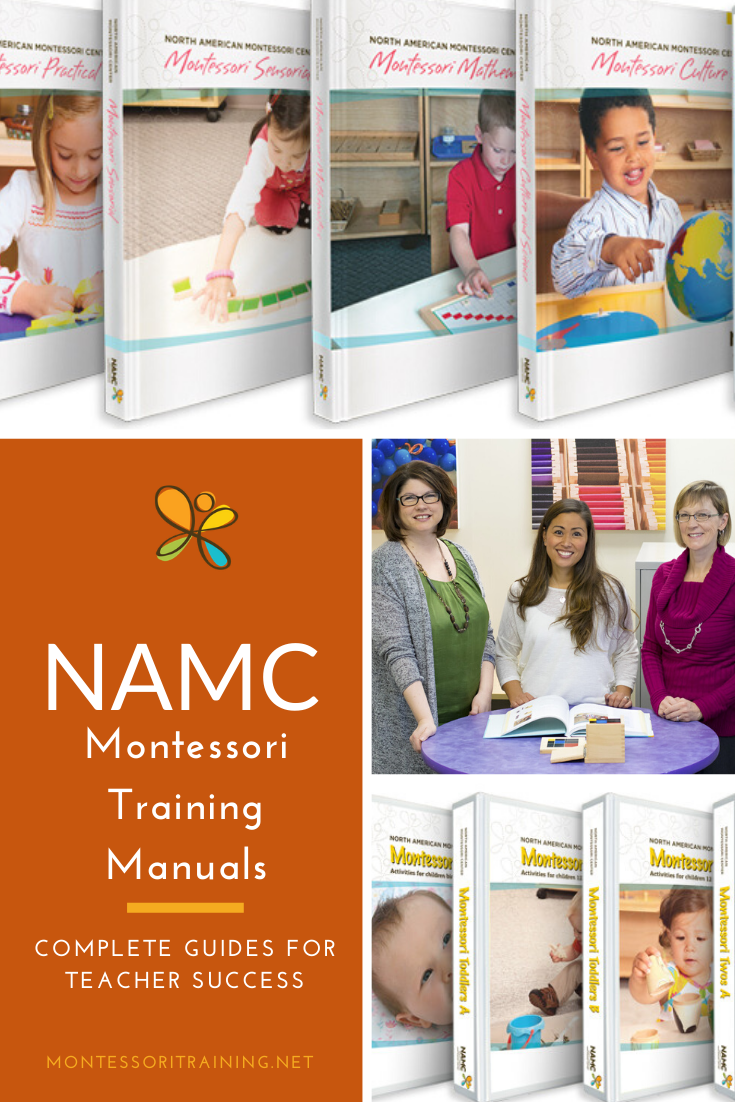
Putting the Montessori Philosophy into Practice in the Classroom.
NAMC Manuals:
here are clear and dynamic links between the various curriculum areas in a Montessori classroom. Each area of the curriculum emphasizes specific skills but children are encouraged to use their developing knowledge other areas of the curriculum to link them with the specific area being studied. This linking and grouping of knowledge and skills stimulates children’s natural instincts and generates more enthusiasm in them to learn new things.
Curriculum
NAMC refers to North American Montessori Center. There are clear and dynamic links between the various curriculum areas in a Montessori classroom. Each area of the curriculum emphasizes specific skills but children are encouraged to use their developing knowledge other areas of the curriculum to link them with the specific area being studied. This linking and grouping of knowledge and skills stimulates children’s natural instincts and generates more enthusiasm in them to learn new things.
Practical Life
Practical life activities are a core part of a Montessori classroom. They allow children to develop their hand-eye coordination, motor skills, hand strength, balance, concentration and ability to do things by themselves. The focus is on practicing these skills so there is less emphasis on the final product and more on the process itself. Children learn some practical life skills which can be used throughout their lives by the repetition of these practical life activities in the school. Some examples of practical life activities are food preparation, pouring, scooping, serving, table cleaning and flower arranging.
Sensorial
In a Montessori classroom children learn about colors, sizes, shapes, lengths and textures with the aid of sensorial materials. Using these materials not only promotes such learning, it also enhances a child’s powers of observation regarding the things that exist in his/her world. Sensorial materials include such objects as geometric solids/blocks, color tablets, rough and smooth surface boards, the pink tower and the binomial cube.
Language and Art
In a Montessori classroom children learn about colors, sizes, shapes, lengths and textures with the aid of sensorial materials. Using these materials not only promotes such learning, it also enhances a child’s powers of observation regarding the things that exist in his/her world. Sensorial materials include such objects as geometric solids/blocks, color tablets, rough and smooth surface boards, the pink tower and the binomial cube.
Math
In a Montessori classroom children learn about Mathematical concepts are presented in a Montessori classroom with the aid of concrete materials such as beads, counters, spindles, chains and boxes. Using physical objects like these allows children to visualize abstract mathematical tasks and hence develop mathematical reasoning skills. For example, they learn how an amount can be represented by a numeral. By handling physical objects they can easily understand basic mathematical concepts such as addition and subtraction.
Culture and Science
In a Montessori classroom children learn about A manual introduces the Introduction to geography, history, botany, zoology, and science. Children learn through materials included photographs that are essential in studying geography with young children. It is a stimulation of the senses. Children will capable familiarly the steps of learning the earth, the various lifestyles and culture around the world, flags of the world, and the names of the continents, countries, states and provinces. Moreover, children have to understand that there are other lives on the earth such as plants and animals. All kinds of lives are benefited each other. So life has to be protected by lives. In addition, a manual also guides about the sequence of time that teaches them how to set up the proper order of daily life. As a result, children may reveal that their life is not only just at home and school, but also related to the world or earth.
CLASSROOM
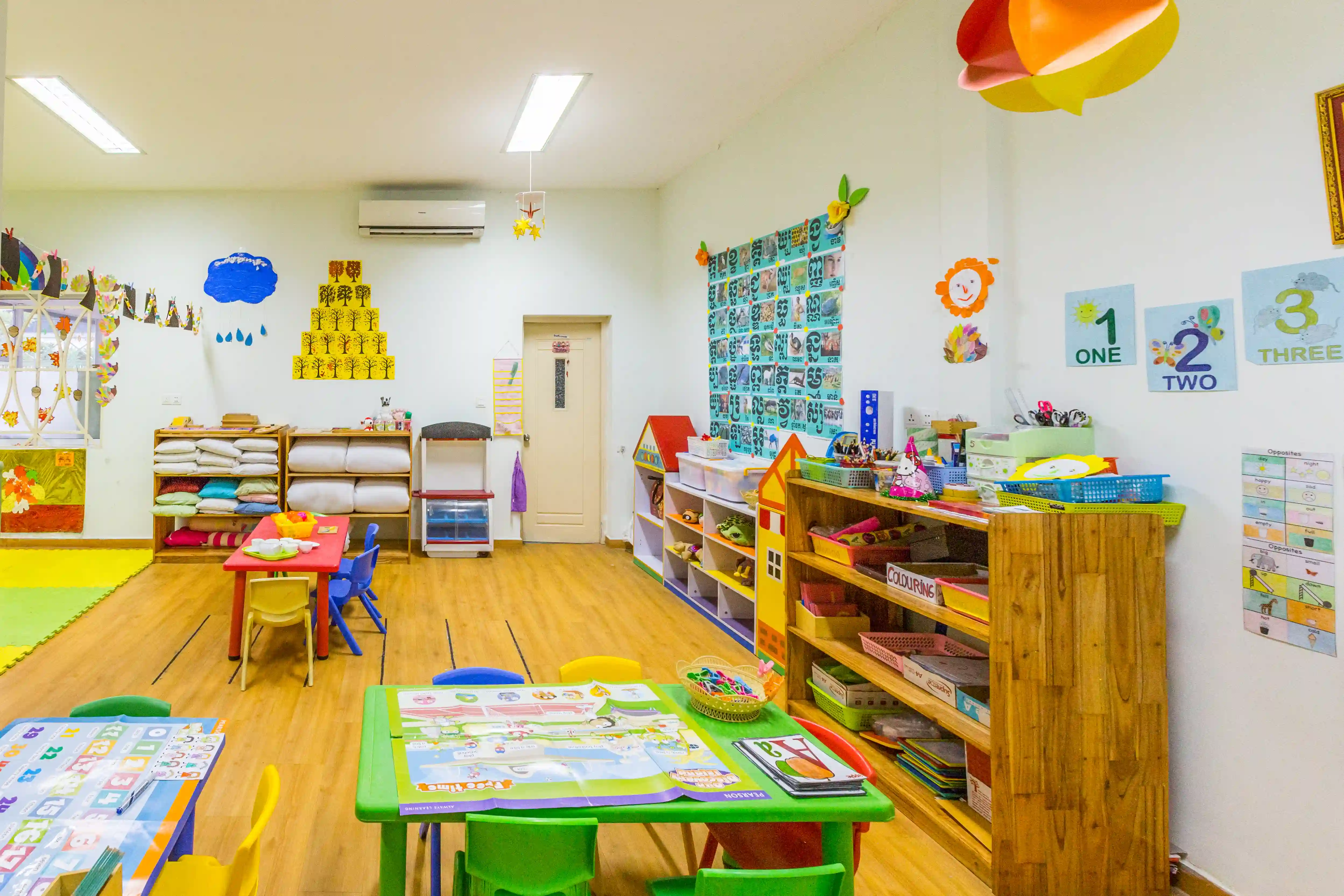
Montessori Classroom
Montessori classroom is the vital part of Montessori educational system. The classroom is the interaction with children and objects in the environment that need to be well-prepared. The aspect of environment in each Montessori Classroom has to arrange under the concept of developing children’s growth and development. Due to the fact that children learn from the real life activities, the classrooms have to design for welcoming children, and making they feel the classroom is theirs. For instance, everything- the materials, the child size furniture, and the space is designed for them. With caring of joy in learning, Maria Montessori provided how to approach safe and attractive tone; especially, the needs of children. The prepared environment also provides opportunities to children for self-correction and developing physically, mentally, emotionally, and socially. An organized, uncluttered environment frees children to focus during sensitive periods and the paces of development. The tone must design without interrupting their concentration.
Classroom Setup
The goals of setting up well-prepared Montessori Classroom are to make the children feel comfortable, safe and special, and to show them that an organized environment is made for them. All classrooms are set up to exhibit warmth and beauty, and to contain materials carefully chosen to take into account absorbent minds, sensitive periods, independence, control of error, and normalization. Each classroom needs to have ample space, provide easy visibility for teachers, keep the children’s focus on materials, incorporate control of error, appeal to the senses, and provide the children with some opportunity to care for living things. The space in the Montessori classroom is designed to facilitate a number of important goals and gave enough for the children’s movement. Hence, the beauty also the main feature in Montessori classroom. For example, there needs a few interesting, real-life pictures on the neutral-colored wall, child-size tables and chairs, variety in texture and color of furnishings, living plants and low shelves. All materials are designed in child-size and child’s-eyes. As both tone and materials are reached the most interests of the children, they feel cared for and protected. Particularly, they will learn happily and develop knowledge rapidly through their work period, included the prepared classroom. The process improves an understanding of what children like and what they respond to. An ordered environment makes it easier for teachers to watch, follow, and help promoting each child’s progress.
Montessori Preschool
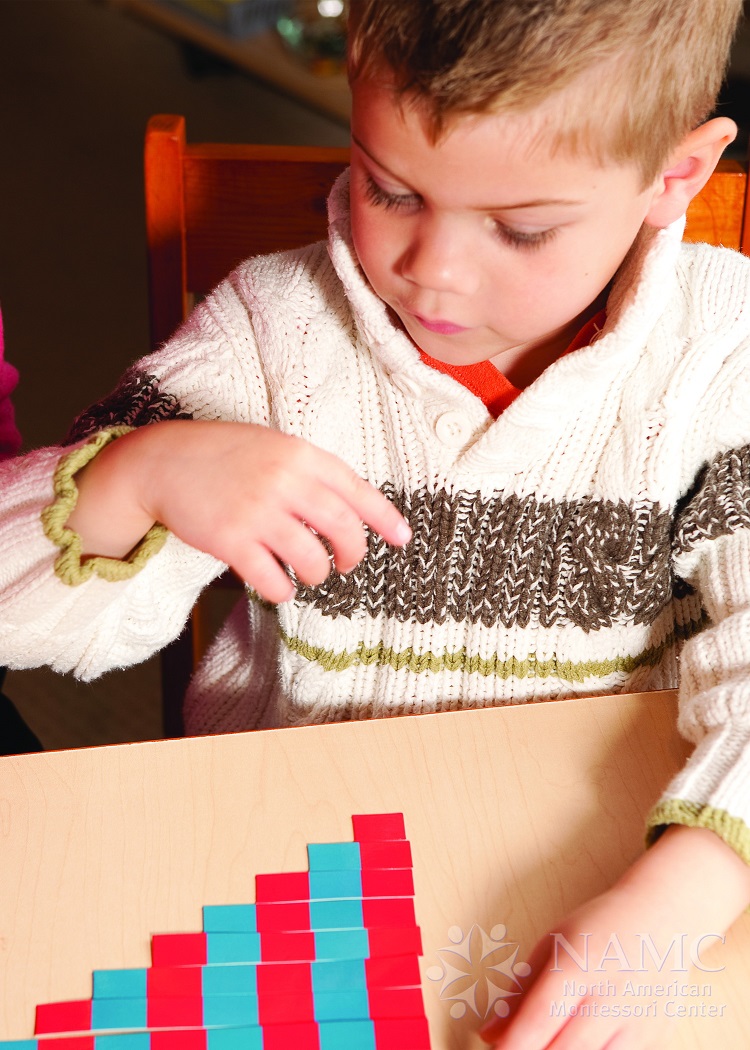
Number Rod
(Age 3- 3.5 years old): There are ten Rods which are the same as the Red Rods, only the Number Rods are divided into sections equal to the shortest Rod, and alternate in color from red to blue. Children can practice counting in order to visualize the quantities 1 to 10, and to learn to associate the names with the quantities. This can be practiced in small group and during circle time.
Pink Material
(Age 4-5years old): Children can either work in a small group or individual. During the presentation and practice, the children are followed by five steps such as Phonetic Objects, Phonetic Pictures, Phonetic Picture Cards, Phonetic Booklets and Phonetic Word Lists. The purpose of working with Pink Material is to help the child decode three-letter phonetic words into their constituent sounds.
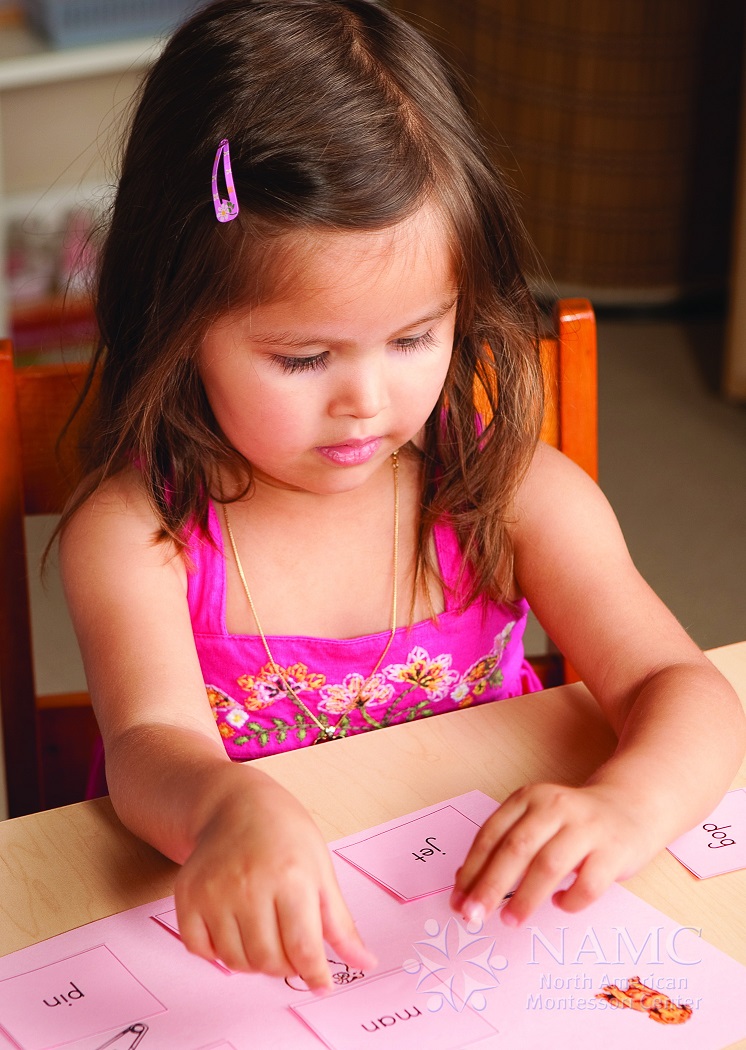
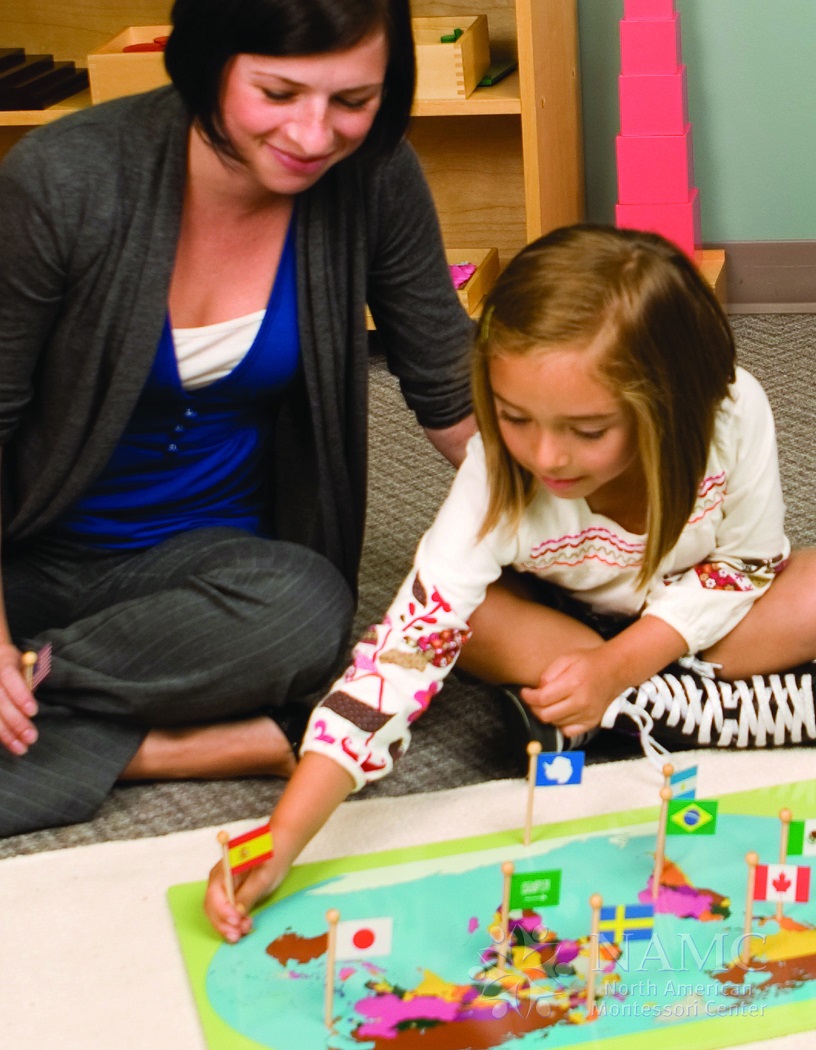
NAMC Pin Map
(2.5 years old): Children can be introduced to a small group and showing them a set of flags displayed in a wooden stand of each country. The Pin Map introduces the children to the flags of countries around the world.
Geometric Solids
(Age 3.5 years old): This is an introduction of shapes with a set of solid geometrical forms. It is a kind of sensorial material that can promote the intellectual development of children with disabilities by stimulating their senses. The children can develop a sense of self-indentify, especially, during the sensitive period.
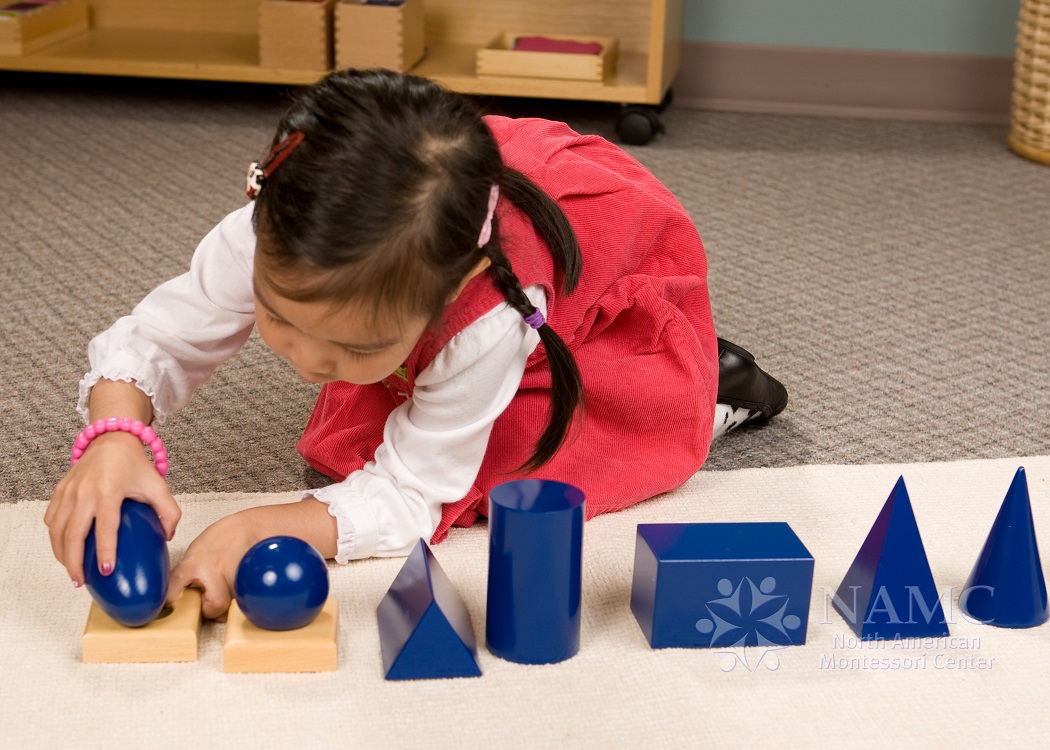
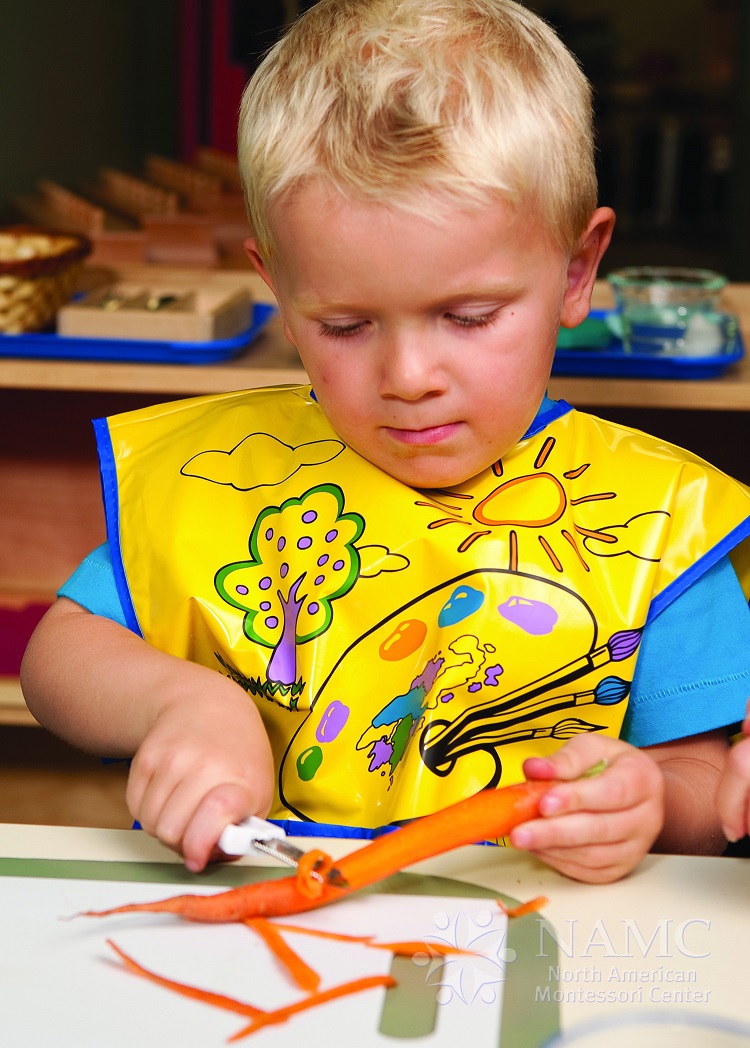
How to Peel a Carrot
(Age 3.5 years old): This is an individual activity. It teaches a child how to carefully peel a carrot. This practice is a part of practical life activities that considered as an essential learning how to be a good self-control.
Bilingual Elementary
We are proud to adopt Pearson Global Schools program as our main Elementary program along with Khmer program from Ministry of Education, Youth and Sport of the Kingdom of Cambodia.
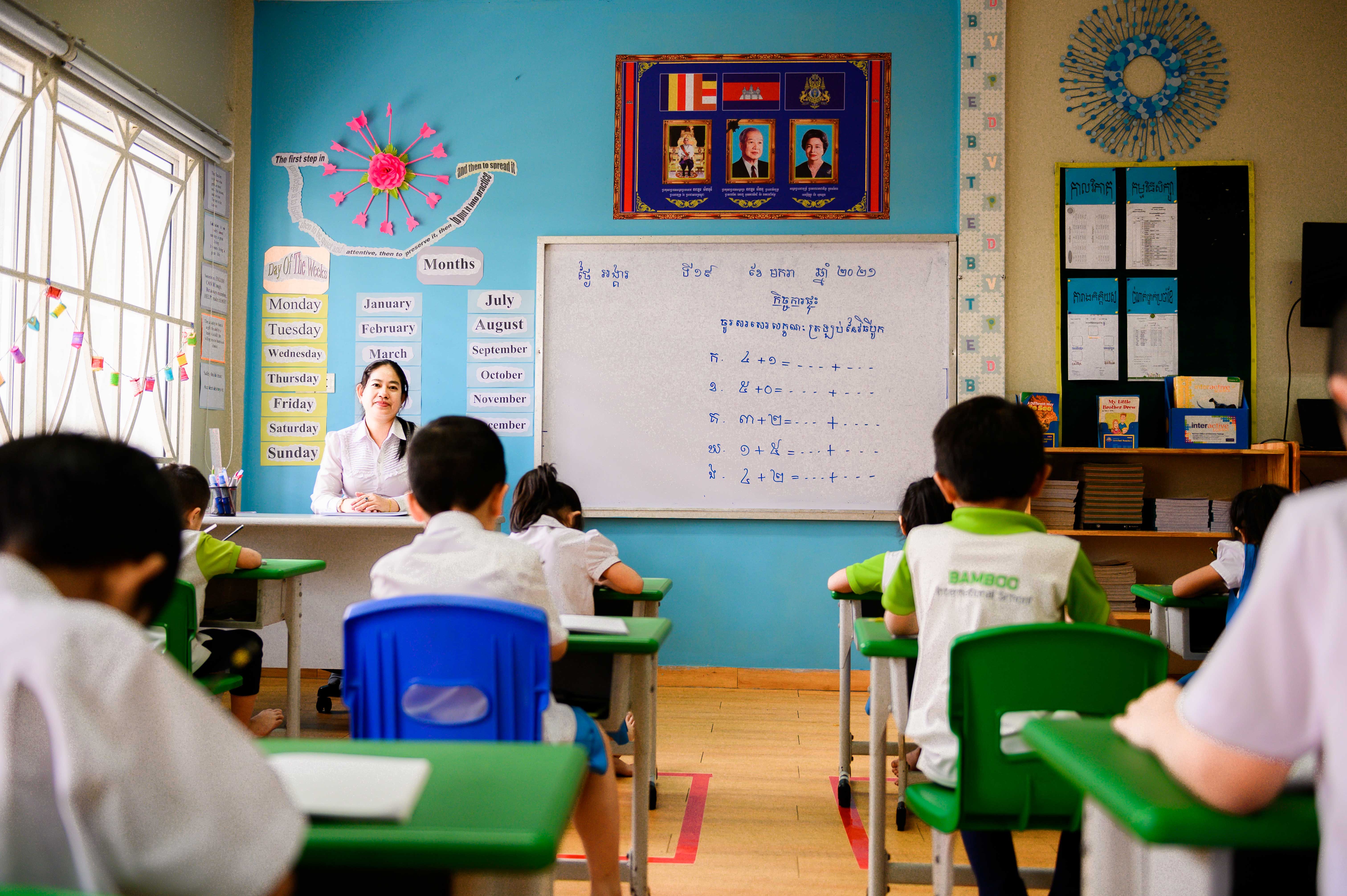
About PEARSON GLOBAL SCHOOLS
Part of the world's leading learning company, Pearson Global Schools is a team of dedicated educational specialists, based in over 70 countries who work with schools around the world. Every member of our team works closely to develop partnerships with global schools to inspire enthusiastic, confident and independent learners.
Whether you are following a UK, US or International or local curriculum, we have everything you need to support your schools needs. Pearsons classroom resources, multimedia learning tools and testing programmes help to educate over 100 million people worldwide; Global Schools will offer you the very best of these resources.
About The Common Core State Standards
The Common Core State Standards provide a consistent, clear understanding of what students are expected to learn, so teachers and parents know what they need to do to help them. The standards are designed to be robust and relevant to the real world, reflecting the knowledge and skills that our young people need for success in college and careers. With American students fully prepared for the future, our communities will be best positioned to compete successfully in the global economy.
The challenge
Scott Foresman Reading Street is an all-new comprehensive Reading and Language Arts series for the 21st Century. Reading Street delivers classic and soon-to-be classic literature, scientifically research-based instruction, and a wealth of groundbreaking online experiences for high student engagement.
Reading Street is the cause to absorb many clues in order to reach and familiar the proper living in the world. It may explain and answer a reader’s doubts. Students will learn through the information and resources provided that guide them to the real perspectives. Learning to read will improve their consideration, critical thinking, general knowledge, and life skills. The information that readers get are the right paths of being useful people.
Scopes and Sequences:
Visual Skills:
- Realism and Fantasy
- Cause and Effect
- Main Idea and Details
- Literacy Elements
Visual Strategies
- Background Knowledge
- Important Ideas
- Inferring
- Monitor and Clarify
- Predict and Set Purpose
- Questioning
- Story Structure
- Summarize
- Text Structure
- Visualize
Scott Foresman enVisionMATH
Daily problem-based Interactive Math Learning followed by Visual Learning strategies deepen conceptual understudying by making meaningful connections for students and delivering strong, sequential visual/verbal connections through the Visual Learning Bridge in every lesson. Ongoing Diagnosis & Intervention and Data-Driven Differentiation ensure that enVisionMATH gives every student the opportunity to succeed.
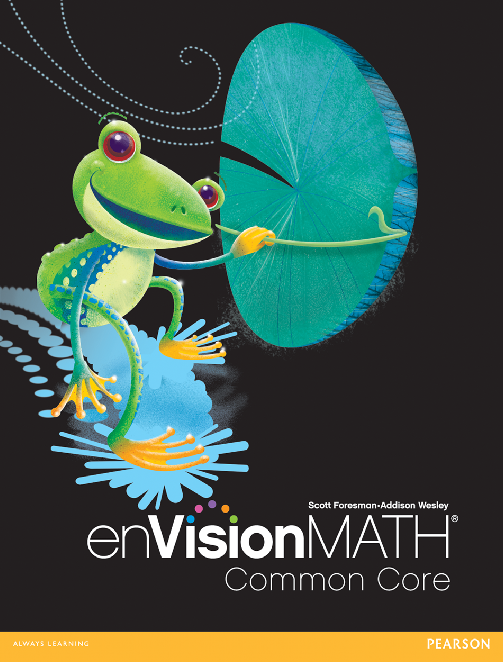
GEOMETRY:
-
Plane and Solid Figures
-
Angles
-
Number Lines and the Coordinate Plane
PROBABILITY AND STATISTIC/DATA ANALYSIS:
-
Reading and Making Graphs
-
Data Collection and Analysis
-
Probability
PROBLEM SOLVING:
-
Problem-Solving Skills and Strategies
-
Reasoning, Communication, Connections
- Personalized and focused curriculum: Students learn 20 topics that are coherent, digestible groups of lessons with a common focus.
There are 6 math scope and sequence:
-
Number and Operations
-
Measurement
-
Geometry
-
Algebra
-
Probability and Statistic
-
Problem Solving
NUMBER AND OPERATIONS:
-
Whole Number Concepts
-
Money
-
Fraction Concepts
-
Decimal Concepts
-
Integer Concepts and Operations
-
Estimation and Mental Math Strategies
-
Whole-Number Addition/Subtraction/Multiplication/Division
-
Fraction Operations
-
Decimal Operations
-
Ratios, Proportions, and Percent
ALGEBRA:
-
Patterns and Relationships
-
Number Sentences, Equations and Inequalities
-
Measurement
-
Time and Temperature
-
Length and Perimeter
-
Area
-
Weight/Mass
-
Capacity/ Volume
- REPRESENTATION A flexible sequence: The Math component organized to comfort both instruction and learning within work period. Instruction based on techniques, resources and materials that facilitate the tone smoothly.
- PACED FOR TEST SUCCESS: Assessment is a valuable tool for making instructional decisions. Also, it is a test to reveal student’s abilities. Teachers can support their student’s progress toward significant mathematical goals and meet individual need. The pace of student show their readiness for taking the state test.
Interactive Science
PEARSON IS PROUD TO PRESENT INTERACTIVE SCIENCE, A NEXT GENERATION K-8 SCIENCE PROGRAM FEATURING AN INNOVATIVE WRITE-IN STUDENT EDITION THAT MAKES LEARNING PERSONAL, RELEVANT, AND ENGAGING.
Interactive Science: Science is the process of experiment to explore the fact and extend academic language proficiency. Science environment needs objectives, teaching strategies and materials.
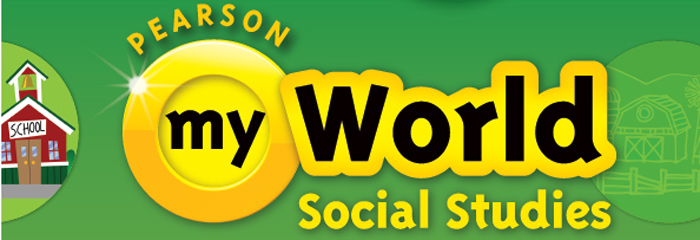
- Curriculum provides into 4 main Scope and Sequences:
Unit A: Science, Engineering, and Technology:
-
The Nature of Science
-
The Design Process
Unit B: Life Science
-
Living Things and Their Environments
-
Plants and Animals
Unit C: Earth Science
-
Earth and Sky
-
Weather
Unit D: Physical Science
-
Energy
-
Matter
-
Movement
myWorld Social Studies
Everyone has a story. What's yours?
myWorld Social Studies utilities storytelling to bring Social Studies content to life. Our exclusive interactive digital solution makes Social Studies personal for every student in a way that's easier for you. With myWorld Social Studies, you can get to the heart of Social Studies in the time you have.
myWorld Social Studies, connects Social Studies content and literacy instruction with materials that are streamlined, flexible and attuned to today's classroom. Our innovative digital instruction is seamlessly integrated, providing a blended program that is engaging, effective and easy to use.
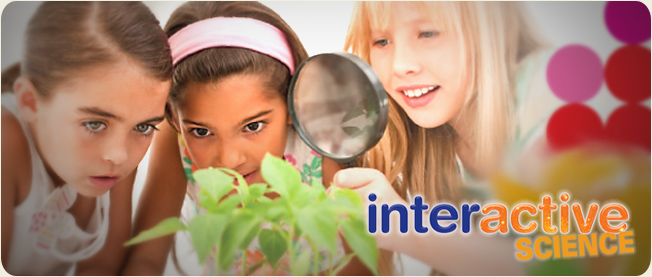
myWorld Social Studies is designed to
-
Connect Social Studies content with literacy instruction
-
Engage students and advance student achievement
-
Reduce teacher preparation time
Social study is an essential and beneficial subject which affects people’s living since they interact widely with the real world. A subject guides toward various norms and life skills in the world. Through participating social learning, learners develop their reading and writing skills based on lesson provided and exercises. The lessons teach students to understand how to live in common society and be good citizens. Concepts of social studies assist learners to be cooperative, creative, communicative and responsible people. They will acknowledge the concepts of fact and opinion, cause & effect, main idea & details, compare & contrast, sequence, and keys to good writing.
Scope and Sequence: Themes to reach the goals of learning
-
Culture
-
Power, Authority, and Governance
-
Time, Continuity, and Change
-
Production, Distribution & Consumption
-
People, Places, and Environments
-
Science, Technology, and Society
-
Individual Identity and Development
-
Global Connections
-
Individuals, Groups, and Institutions
-
Civic Ideals and Practices
Programs By Ages
We are proud to adopt Pearson Global Schools program as our main Elementary program along with Khmer program from Ministry of Education, Youth and Sport of the Kingdom of Cambodia.
Toddler Program
Overview
The Toddler program is for children 24 months and up. Toddlers naturally tend to act independently. Learning to care for themselves – washing hands, putting on jackets – and do it themselves is an important part of the toddlers’ work. And we can take that advantage of that. In this language-rich environment, teachers help guide toddlers as they explore order and disorder, and refine their emerging motor skills. Outdoor play is part of the daily routine.
They learn by doing. Classroom materials are always accessible, attractive, safe, and geared for a child’s success and development. Activities are changed regularly in response to children’s need for variety and challenge as they grow and learn. We will make sure that the atmosphere is safe, loving, gentle and puts children and parents at ease and makes for a trusting, spontaneous transition to school. Toddlers come to school five days a week, and may choose to stay for just mornings or a full day. After their Toddler Program, children join our Primary program.
Primary K Program
Overview
The Primary program is designed for children between the ages of 3 and 6. Each class is a mixed-age group so children spend three years in the same classroom. This continuity allows them to get to know each other and their teachers very well and makes for a vibrant and strong classroom community.
Children between the ages of 3-6 learn by actually doing things for themselves. To facilitate active learning, each classroom has furniture and fittings specifically designed to suit small children. Montessori classrooms also contain a large number of material objects to enable children to move and do things. By observing and interacting with others, children can use these objects to help discover the world around them. Teachers take the students through the curriculum, introducing new lessons and then encouraging the children to practice what they have learned. As the children grow older they can use these physical teaching materials in new and more complex ways to explore the curriculum.
Between the ages of 3 and 6, there is a tremendous change in the physical and mental capacity of children. They progress to more cooperative and complex forms of play and social interaction. Their language skills expand rapidly and they begin to develop basic reading and writing skills. Their gradual understanding of number sense allows them to progress and begin to learn the foundations of math. Montessori teachers are trained to respond to these changes by preparing and providing suitable lessons which nurture the growing capabilities of each individual child. Children following the Primary Program attend classes at the school five days a week and have the option of staying for a morning session or for a full day.
